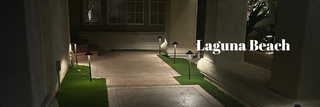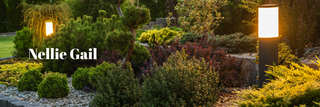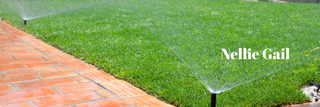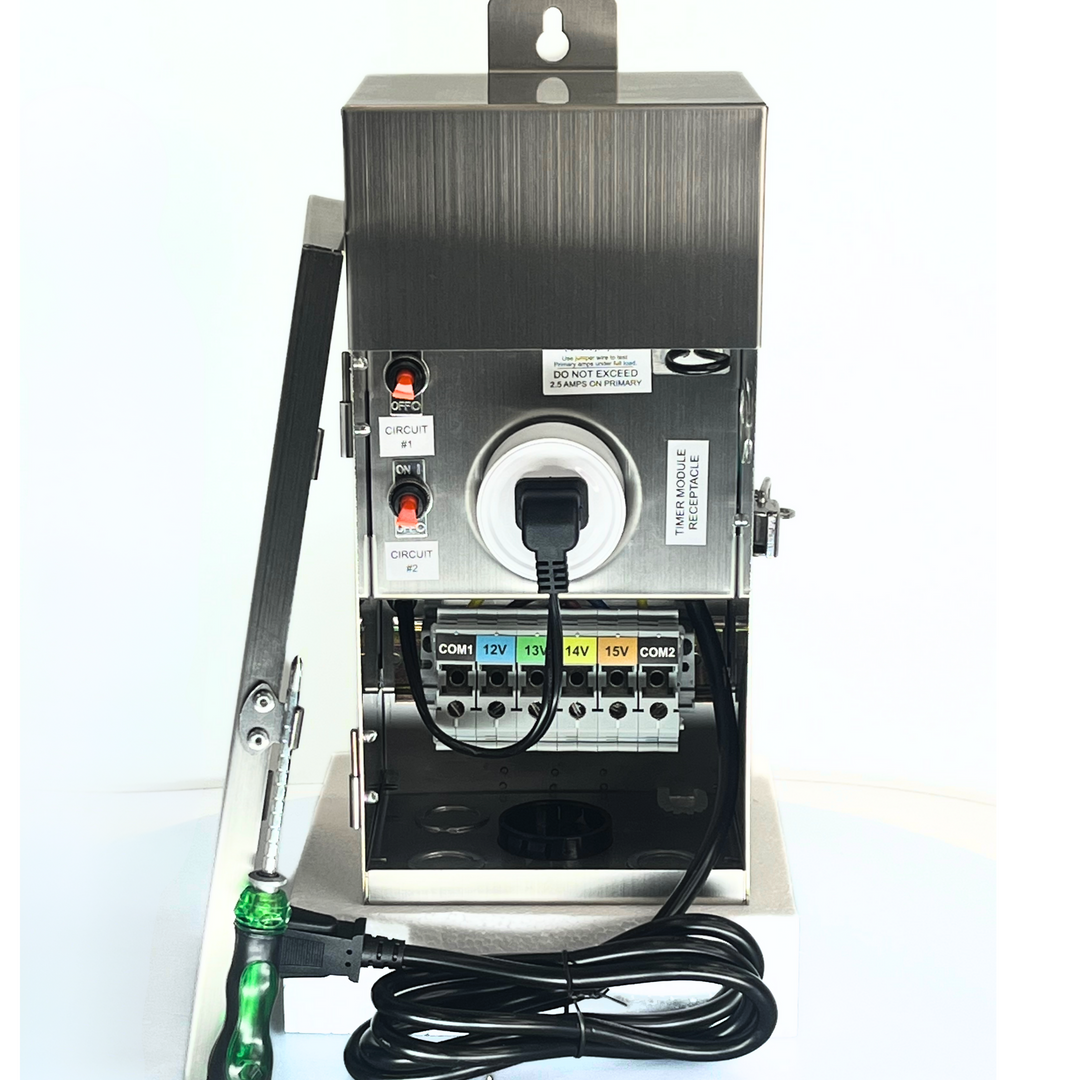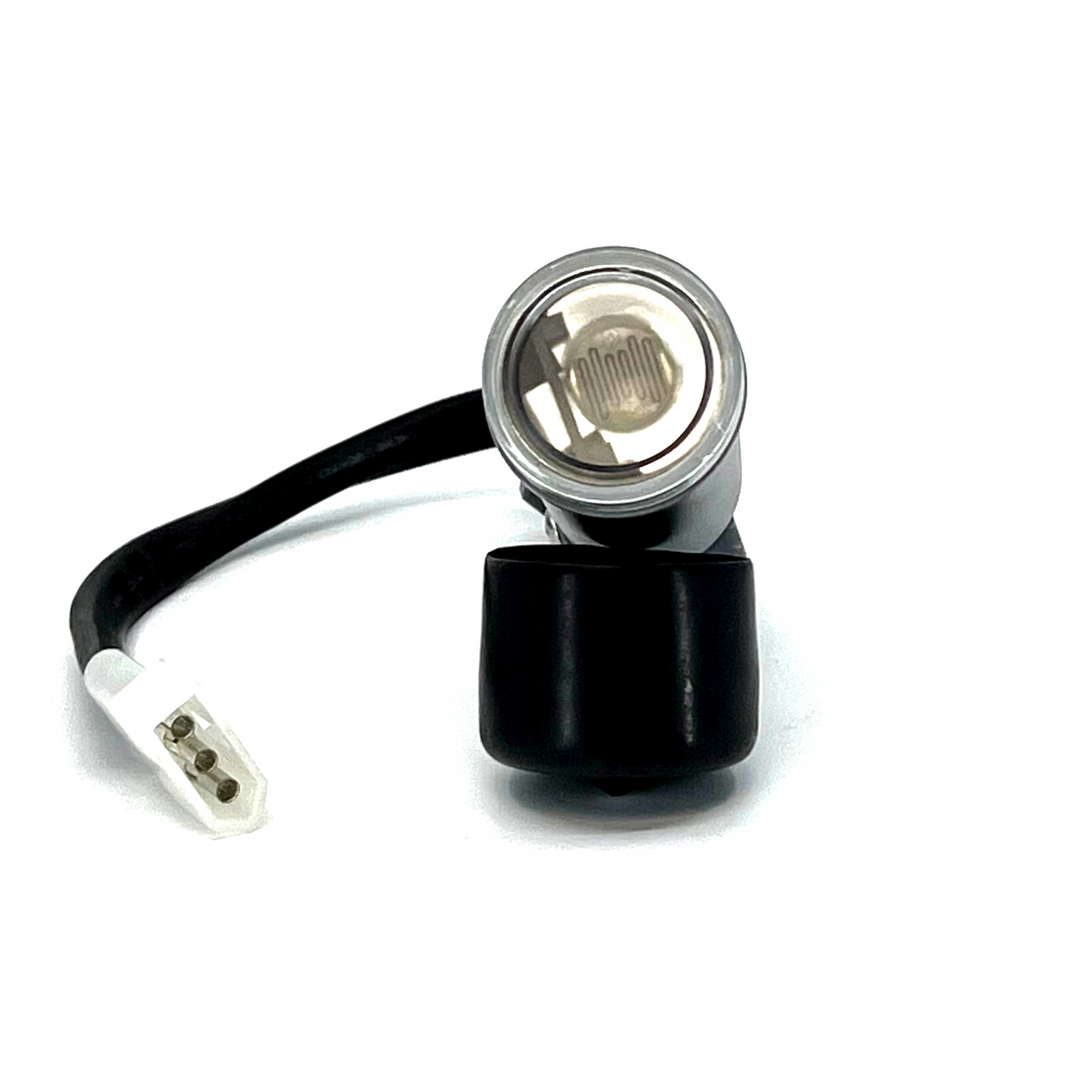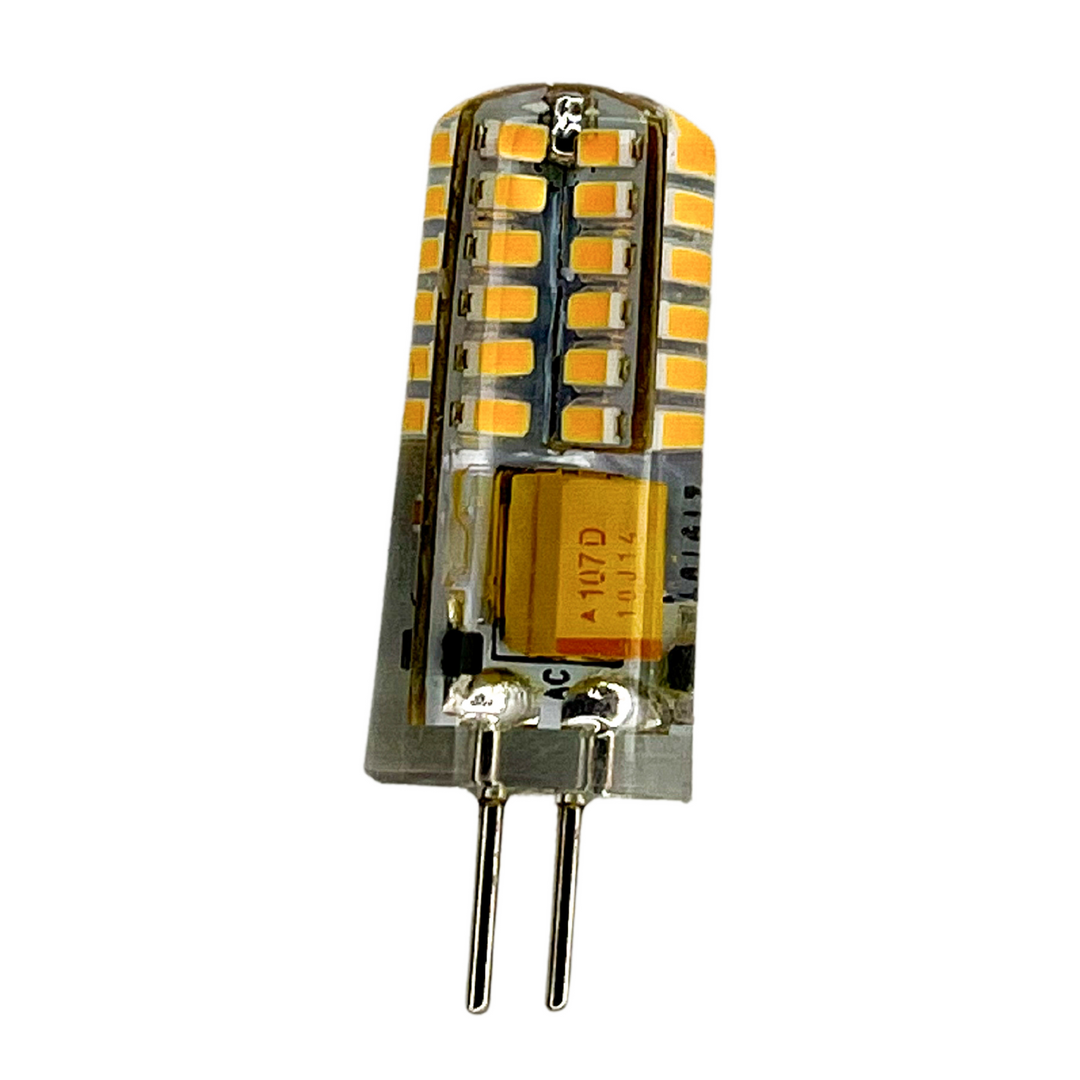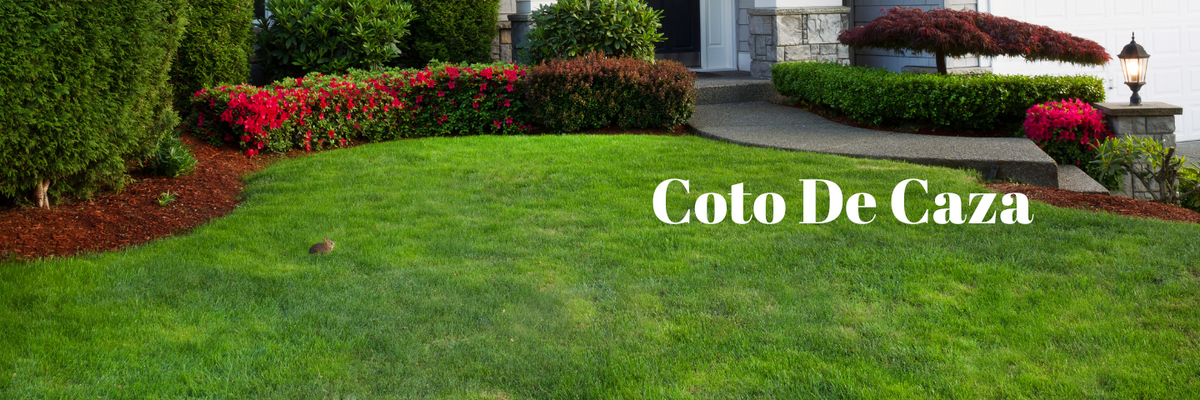
February's Best Sprinkler Installations for Coto De Caza
|
|
Time to read 7 min
Efficient sprinkler systems are a vital part of maintaining healthy, beautiful landscapes, especially in unique regions like Coto De Caza. February brings mild temperatures and occasional rain, making it the perfect time to reassess your irrigation needs. Whether you're a homeowner looking to improve your garden or a landscaper seeking efficient solutions, understanding the nuances of sprinkler installations will save water, reduce costs, and ensure your plants thrive throughout the year.
Understanding Coto De Caza's Climate in February
Coto De Caza, known for its picturesque landscapes and Mediterranean climate, experiences mild winters that significantly affect landscaping decisions. February, in particular, brings cooler mornings and mild afternoons, with average temperatures ranging from the mid-40s to the mid-60s Fahrenheit. This weather creates an environment where certain plants may enter dormancy while others continue to grow, albeit at a slower pace.
An efficient sprinkler system can make a significant difference in managing these variables. By adjusting watering schedules and using technology that responds to real-time weather changes, homeowners can maintain vibrant landscapes without wasting water. The key lies in understanding how Coto De Caza’s unique climate influences plant health and irrigation requirements during this transitional season.
Key Benefits of Efficient Sprinkler Systems
Water Conservation
Water conservation is one of the most significant advantages of efficient sprinkler systems, especially in regions like Coto De Caza where drought conditions and water restrictions are common. Modern irrigation systems are designed to use water judiciously, applying it directly to the root zones where plants need it most. This targeted approach minimizes evaporation, runoff, and overspray onto non-essential areas like sidewalks or driveways.
Reducing Utility Costs
While the initial investment in an efficient sprinkler system might seem high, the long-term savings on water bills can be substantial. Smart irrigation controllers and properly designed systems prevent overwatering and ensure that every drop of water is used effectively. During February, when natural rainfall may already contribute to soil moisture, adjusting your system can lead to noticeable reductions in your monthly water expenses.
Healthier Lawns and Gardens
Efficient sprinkler systems don’t just save water—they also contribute to healthier landscapes. Overwatering can lead to numerous problems, including fungal growth, root rot, and pest infestations. Conversely, underwatering stresses plants, making them more susceptible to disease. An efficient irrigation system strikes the right balance, providing the optimal amount of water for each part of your landscape.
Environmental Responsibility
Investing in an efficient sprinkler system aligns with broader environmental goals. Reducing water consumption helps conserve valuable resources, especially in drought-prone areas like Southern California. Additionally, efficient systems minimize runoff, which can carry fertilizers and other chemicals into local waterways, negatively impacting the environment.
Key Benefits of Efficient Sprinkler Systems
Water Conservation
Water conservation is one of the most significant advantages of efficient sprinkler systems, especially in regions like Coto De Caza where drought conditions and water restrictions are common. Modern irrigation systems are designed to use water judiciously, applying it directly to the root zones where plants need it most. This targeted approach minimizes evaporation, runoff, and overspray onto non-essential areas like sidewalks or driveways.
Reducing Utility Costs
While the initial investment in an efficient sprinkler system might seem high, the long-term savings on water bills can be substantial. Smart irrigation controllers and properly designed systems prevent overwatering and ensure that every drop of water is used effectively. During February, when natural rainfall may already contribute to soil moisture, adjusting your system can lead to noticeable reductions in your monthly water expenses.
Healthier Lawns and Gardens
Efficient sprinkler systems don’t just save water—they also contribute to healthier landscapes. Overwatering can lead to numerous problems, including fungal growth, root rot, and pest infestations. Conversely, underwatering stresses plants, making them more susceptible to disease. An efficient irrigation system strikes the right balance, providing the optimal amount of water for each part of your landscape.
Environmental Responsibility
Investing in an efficient sprinkler system aligns with broader environmental goals. Reducing water consumption helps conserve valuable resources, especially in drought-prone areas like Southern California. Additionally, efficient systems minimize runoff, which can carry fertilizers and other chemicals into local waterways, negatively impacting the environment.
Rotary vs. Fixed Sprinklers
Rotary sprinklers and fixed spray heads each serve specific purposes. Rotary sprinklers emit water in a rotating stream, covering large areas with adjustable spray patterns. They’re ideal for expansive lawns and open spaces where even distribution is essential.
Fixed spray heads, on the other hand, emit water in a constant, fan-shaped pattern. They’re best suited for smaller, defined areas where precision is key, such as narrow flower beds or pathways. By combining both types of sprinklers, homeowners can achieve comprehensive coverage tailored to their landscape's unique layout.
Planning Your Sprinkler System Installation
Evaluate Your Landscape
Before installing a sprinkler system, take time to evaluate your landscape’s specific needs. Identify different plant zones, considering factors like sun exposure, soil type, and plant variety. For example, shaded areas will require less water than sun-drenched lawns, while certain plants may need more frequent watering than others.
In Coto De Caza, where properties often feature diverse landscaping, this step is crucial. By understanding your yard’s unique characteristics, you can design a system that provides efficient, customized irrigation for every area.
Measure and Map Your Yard
Accurate measurements are key to an efficient sprinkler installation. Start by sketching a layout of your yard, marking areas like lawns, gardens, walkways, and patios. Use these measurements to determine the number of sprinkler heads needed and their optimal placement.
Choose the Right System for Your Needs
With a clear understanding of your landscape, you can choose a sprinkler system that fits your needs and budget. Consider factors like system complexity, water pressure, and future landscaping plans. For example, if you plan to add a garden in the future, choose a system that can be easily expanded.
Account for Sunlight and Soil Type
Sunlight exposure and soil type significantly impact watering needs. Areas with full sun require more frequent watering, while shaded zones need less. Similarly, sandy soils drain quickly and may need more water, while clay soils retain moisture longer.
By tailoring your sprinkler system to these factors, you can ensure efficient water usage and promote healthier plant growth. This attention to detail is particularly important in Coto De Caza, where diverse landscapes often feature a mix of sun, shade, and varied soil types.
The Installation Process: Step-by-Step Guide
Design Your Irrigation Zones
Start by dividing your yard into irrigation zones based on plant type, sun exposure, and watering needs. Lawns, flower beds, and shrubs often require different watering schedules, so separating them into distinct zones allows for customized irrigation.
In Coto De Caza, where landscapes can be diverse and complex, zoning ensures that each part of your yard receives the appropriate amount of water. This approach not only conserves water but also promotes healthier, more vibrant plants.
Prepare the Ground
Once your zones are mapped, mark out the trench lines using spray paint or string. Carefully dig trenches to the recommended depth, usually 6 to 12 inches, to protect pipes from surface damage. Ensure the trenches are clear of rocks and debris, as these can interfere with the installation.
Proper preparation is key to a smooth installation process. Taking the time to dig clean, precise trenches will make it easier to lay pipes and ensure long-lasting performance.
Lay Pipes and Install Sprinkler Heads
Use high-quality, durable materials to lay the pipes and install the sprinkler heads. Position the heads strategically to provide overlapping coverage, preventing dry spots and ensuring even watering. Make sure each sprinkler head is level with the ground to avoid uneven spraying or potential damage from lawn equipment.
Connect to Water Supply
Connect your sprinkler system to the main water supply, installing a backflow preventer to protect against contamination. This device ensures that water flows in one direction, keeping your home’s water supply safe.
Program the Controller
Finally, program your irrigation controller based on the specific needs of each zone. Set watering schedules that account for February’s cooler temperatures and occasional rain. Adjust the settings to provide less water during rainy periods and more during dry spells.
Maintaining Your Sprinkler System for Optimal Performance
Regular System Inspections
Routine maintenance is essential for keeping your sprinkler system running efficiently. Regularly inspect the system for leaks, broken sprinkler heads, and clogged nozzles. Addressing small issues promptly can prevent more significant problems down the line.
Seasonal Adjustments
Adjust your watering schedule to reflect seasonal changes. In February, reduce watering frequency to account for cooler temperatures and natural rainfall. As the weather warms in spring and summer, increase watering as needed.
Seasonal adjustments not only conserve water but also promote healthier plant growth by providing the right amount of moisture at the right time.
Winterizing the System
Even in mild climates like Coto De Caza, winterizing your sprinkler system is important. Drain water from the pipes to prevent freezing, which can cause cracks and leaks. Insulate exposed pipes and valves for added protection.
Taking these steps ensures your system remains in good condition, ready to resume full operation when warmer weather returns.
Smart System Updates
If you’re using a smart irrigation controller, keep the software updated to maintain optimal performance. Regularly recalibrate sensors and review system settings to ensure accurate weather-based adjustments.
Local Regulations and Resources in Coto De Caza
Water Usage Restrictions
Coto De Caza, like many California communities, has water usage restrictions to promote conservation. These may include limits on watering days and times, especially during drought conditions. Familiarize yourself with local guidelines to ensure your irrigation practices are compliant.
Following these rules not only helps conserve water but also avoids potential fines or penalties.
Permit Requirements for Installation
Before beginning any major sprinkler installation, check with local authorities to see if permits are required. Some municipalities have specific regulations regarding backflow preventers, water pressure, and system design.
Ensuring compliance with these regulations protects both your property and the community’s water supply.
Professional Resources
While many homeowners can handle basic sprinkler installations, more complex systems may require professional assistance. Landscape irrigation specialists have the expertise to design and install systems that maximize efficiency and comply with local codes.
Maximizing the Long-Term Benefits of Efficient Sprinkler Systems
Efficient sprinkler systems offer numerous long-term benefits, from reduced water bills to healthier landscapes and environmental sustainability. By investing in the right system and maintaining it properly, homeowners in Coto De Caza can enjoy lush, vibrant gardens year-round without unnecessary water waste.
Proper planning and installation are key to maximizing these benefits. Tailor your system to your landscape’s unique needs, adjust schedules based on seasonal changes, and stay informed about local regulations. With the right approach, an efficient sprinkler system becomes an invaluable tool for maintaining beautiful, sustainable outdoor spaces..







